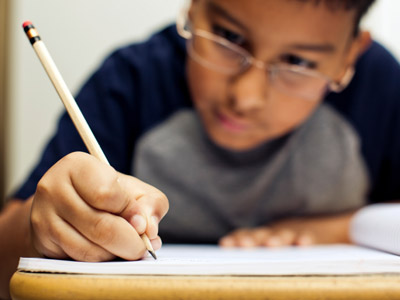We’ve all had the kids whose parents come in and say, “He’s been reading forever and his spelling and grammar are great. But somehow he never gets inferences and he just melts down when he is given a writing task.” Maybe you are lucky enough that this student comes with testing; maybe you’re the first one who’s seen him.
So, the question is, how do you get them to write?
My go-to on these kids is Lindamood Bell’s Visualize and Verbalize program. It helps connect the pictures of the right side of the brain with the words on the left side of the brain. It helps develop both receptive language (oral and reading comprehension) and expressive language (speaking and writing).
But then what? Pure V & V is often done all session long, but for me after about 20 minutes of it, I need to switch activities. This is where I reach into my tool belt and pull out…hmm…one set of pictures of animals from a calendar (donate to World Wildlife Fund once and you are set for life); two identical magnetic scene builders; a file folder; pattern blocks; notecards. Ready?
The first rule of all of these activities? Always call it a game. As in, “Oh, I have a great game we can play…” or “In this game, you will…” The great thing about kids is, if you call it a game, it’s a game.
So, in the first game, you spread out fifteen to twenty of your small pictures of animals (I cut the preview pictures off the backs of the calendars). Arrange them in rows facing the student. Hand her a notecard and get one for yourself. Explain that she is going to pick one of the pictures secretly without telling you what it is. Then she is going to describe it as fully as possible (if you have been using V & V, remind her of the structure words) without using the name of the animal! Make sure she realizes the goal is to get you to guess it; otherwise students try to be mysterious and confusing, which is definitely not the skill we are trying to teach.
You will do the same. This is a great way to model the kind of richly descriptive writing you want. Believe me, the student will notice if your card is full and she has one or two sentences on hers: great motivation for the next round. When you are each done writing, you read your description to her. When she gets it, ask what gave it away. Then she reads you her card. I make a big show of thinking it aloud: “Hmm. You said the animal was a baby, so it must be one of these five. (I physically sort the pictures as I am talking.) You said it was red, so it can’t be this one. You said it had feathers, so is it this one?” If there is possible confusion in the description, make sure not to be able to figure it out. “Hmm, that narrows it down to these two. Can you read the description again? I am not sure which one it is.” Make sure to play this multiple times so your student has a chance to get better, and then point out her growth to her!
A lot of these same kids have some trouble reading complex facial expressions, so one variation of the game is to use photos of people–either ones you have found in magazines, or a deck of emotions face cards. It all works the same way, but you can fold in discussions about feelings as well. I also like asking, “What do you think happened right before the photo was taken that made her feel this way?”
So, what do you do with the scene builders, the file folder and the pattern blocks, you ask? Well, you’ll have to wait until Part II to find out!
This post originally appeared under the Writing Interventions section of the Association of Educational Therapists website.
copyright Diana Kennedy 2013



[…] Mindsparklearning.com […]
Hi Rehana! I am in India working as an Educational Therapist and I use V and V and other programs to enhance reading, writing and math skills in students who struggle in these areas. I will be happy to help you in these areas if needed.
[…] brain. Maybe you have started supplementing that with the Guess the Animal game I described in Part I of this series. But now you are looking for some other activity to continue developing both […]
it seems very useful but we people of developing county like pakistan have to wait still for longer time to benifit from it.Why donot your centre offer their services for such countries. Education and learning is for all.